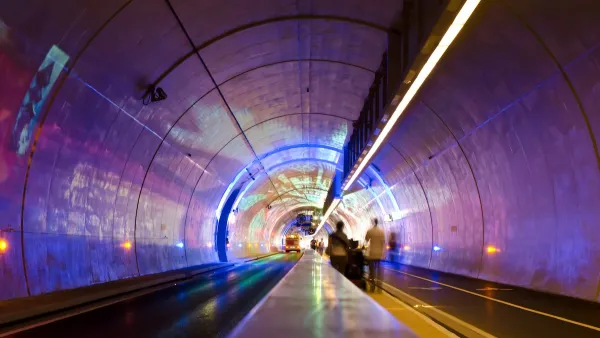Less than 25 years ago, Nantes was an old port town languishing in the wake of failing industry. But thanks to a commitment to public art, it has since become a cultural mecca and thriving tourist destination, Frank Browning reports.
Located on the westernmost shore of the Loire River, Nantes holds an important place in French history, both politically and commercially. But by the end of the 1980s, the city was in bad shape as its massive shipyards and metal factories lay empty. It was in these bleak circumstances that then-Mayor Jean-Marc Ayrault began a campaign to invest in public art that would restore to the city its economic and cultural relevance.
"First came a summer of musical and theatrical performances from groups all over Europe, intended to break the air of sadness and defeat that came from the cities' industrial decline," writes Browning. "Next, as the town moved toward plastic arts, more and more outsiders came, further boosting local confidence, leading finally to still riskier bids financed jointly by public (local, regional, national) sponsorship and corporate collaborations."
Now, the city's outdoor spaces are riddled with enormous, startling installations of contemporary art, from houses half-submerged in the river to a four-story mechanical elephant. Drawing some 200,000 tourists each summer, Nantes quite rightfully bills itself as France's most "bizarre" city. For the past 23 years, artistic director Jean Blaise has been curating works by artists from across the globe, using the city as his gallery space.
"From the beginning France's conservative UMP party... was a consistent doubter that such public investment in 'culture' could generate any real returns. So far, however, the mixture of serious art created by world-class artists, many from China and Japan, seems to have been proved a solid formula for rebirth."
FULL STORY: Art Saves a City: 5-Story Elephant Prowls the Streets

Planetizen Federal Action Tracker
A weekly monitor of how Trump’s orders and actions are impacting planners and planning in America.

Chicago’s Ghost Rails
Just beneath the surface of the modern city lie the remnants of its expansive early 20th-century streetcar system.

Amtrak Cutting Jobs, Funding to High-Speed Rail
The agency plans to cut 10 percent of its workforce and has confirmed it will not fund new high-speed rail projects.

Ohio Forces Data Centers to Prepay for Power
Utilities are calling on states to hold data center operators responsible for new energy demands to prevent leaving consumers on the hook for their bills.

MARTA CEO Steps Down Amid Citizenship Concerns
MARTA’s board announced Thursday that its chief, who is from Canada, is resigning due to questions about his immigration status.

Silicon Valley ‘Bike Superhighway’ Awarded $14M State Grant
A Caltrans grant brings the 10-mile Central Bikeway project connecting Santa Clara and East San Jose closer to fruition.
Urban Design for Planners 1: Software Tools
This six-course series explores essential urban design concepts using open source software and equips planners with the tools they need to participate fully in the urban design process.
Planning for Universal Design
Learn the tools for implementing Universal Design in planning regulations.
Caltrans
City of Fort Worth
Mpact (founded as Rail~Volution)
City of Camden Redevelopment Agency
City of Astoria
City of Portland
City of Laramie




























